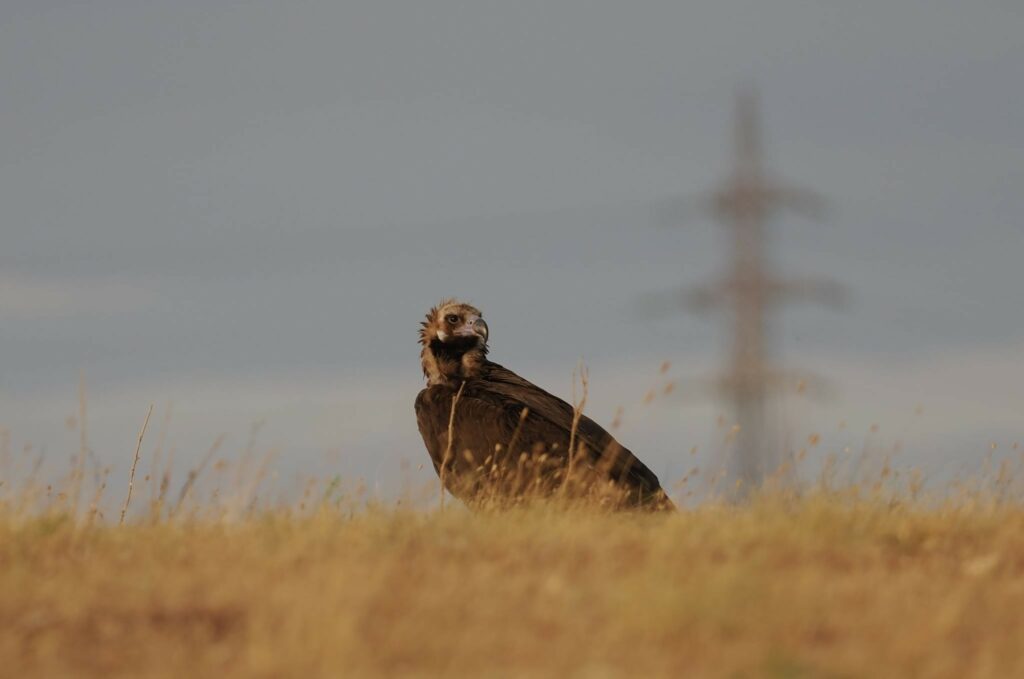During our recent LIFE Re-Vultures International Workshop on Vultures and Veterinary Drugs the participants were fortunate enough to witness a post-mortem of a young Cinereous Vulture that had been found dead a few weeks earlier. As well as finding out about the protocols and procedures needed to identify suspected poisoning incidents, the post-mortem was a rare occasion for our colleagues who work on protecting vultures in Greece and Bulgaria to learn from an experienced veterinarian on the process of conducting vulture post-mortems in a way to investigate the causes of vulture deaths.
A young Cinereous Vulture found dead

Ahead of the Workshop on Vultures and Veterinary Drugs that was held at on the 19 + 20 February in Dadia, north east Greece, the body of a young Cinereous Vulture was discovered in an area just outside Dadia-Lefkimi-Soufli Forest National Park by our colleagues from WWF Greece and a team from the Dadia-Lefkimi-Soufli Forest Management Body who have been researching and protecting the local vultures for decades. The vulture had been previously tagged, and as there have been some poisoning incidents in the area the WWF Greece anti-poisoning canine unit was immediately deployed, thankfully no other dead vultures were discovered and there was no additional evidence to suggest that a poisoning incident had occurred.
There was a powerline nearby but there were no obvious signs of electrocution or collision, and so the cause of death remained unknown. In cases such as this the team investigating the death continue to collect samples to help establish the cause of death. This involves taking samples of internal organs and body tissues, as well as stomach contents, to be sent to a laboratory in Athens for toxicological analysis, whilst the body of the vulture was frozen for later analysis.
Carrying out a post-mortem
One of the participants at the Workshop on Vultures and Veterinary Drugs was expert veterinarian Florence Buronfosse-Roque from the Centre of Veterinary Pharmacovigilance at the University of Lyon. During the workshop, Florence gave an informative presentation about her work investigating the deaths of vultures and other avian scavengers as part of the VIGILANCE POISON programme and other national projects in France, including descriptions of the protocols that are used to conduct thorough necropsies to inform the next stages of post mortem analysis, such as the detection of illegal poisons and veterinary drugs. After being told of the recent discovery of the dead Cinereous Vulture, Florence agreed to perform the necropsy at a local veterinary clinic to demonstrate the methods to some of the workshop participants from local organizations, providing a great training opportunity.

Florence went through the painstaking and detailed process of examining the body for any injuries and dissecting and sampling the organs for further toxicological analyses. Samples of undigested food were taken from the vulture’s crop and digestive tract, as well as from the liver, brain, kidneys and heart. Although there were no obvious signs of traumatic injuries caused by electrocution, collision or shooting, there were signs of internal haemorrhages and swelling of the internal organs which were consistent with acute poisoning. However, Florence emphasized that it was impossible to determine the cause of death without further toxicological analysis and so the team in Dadia now eagerly await the test results.
This incident provided an excellent example of how convening workshops can facilitate the exchange of knowledge and expertise between project partners, improving the capacity of local organizations and adding to their toolkit for effective vulture conservation. Thanks, Florence!




